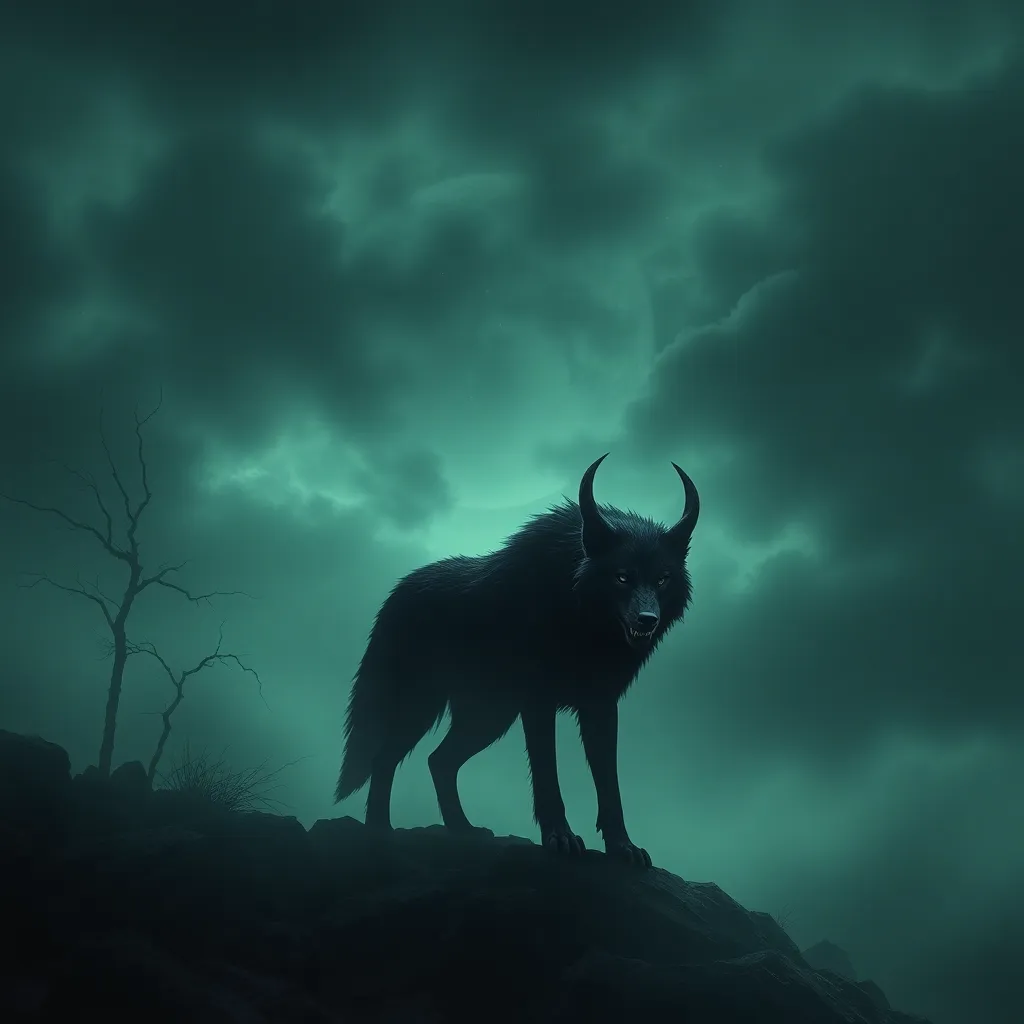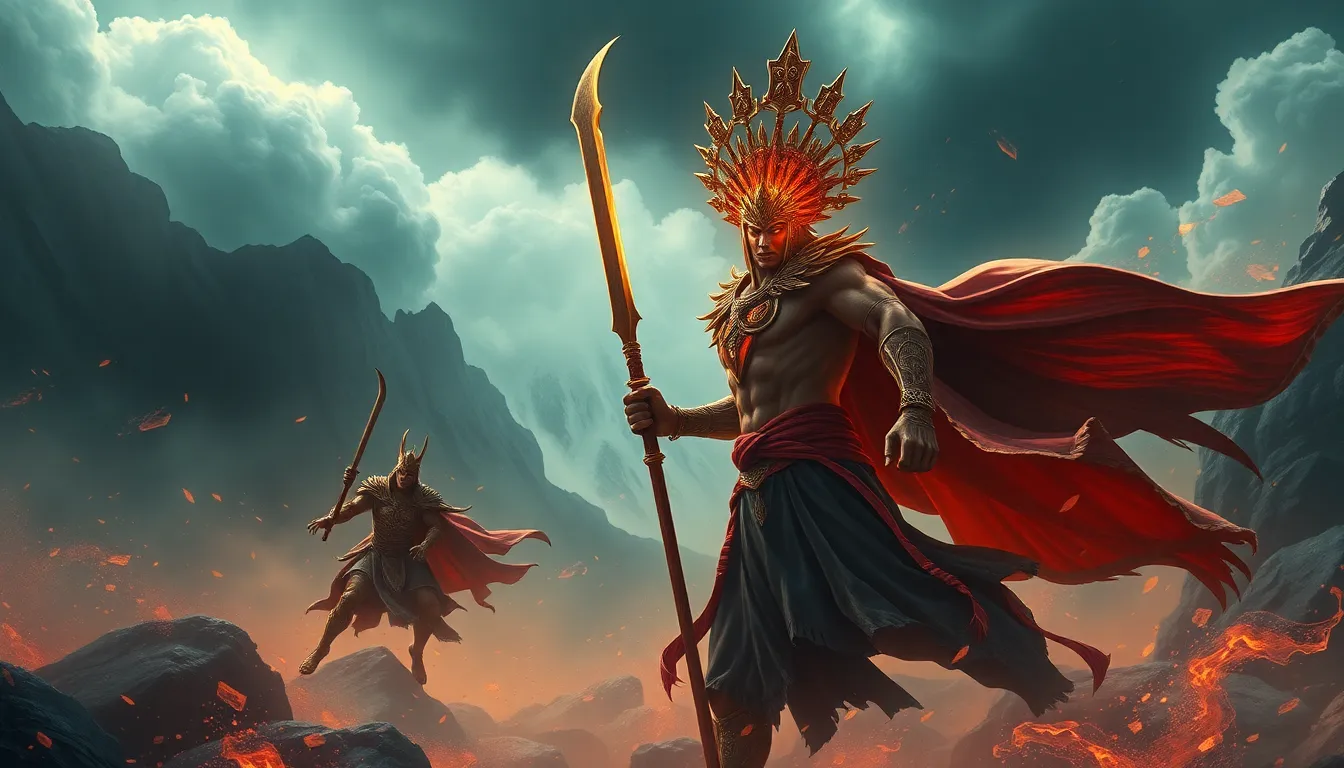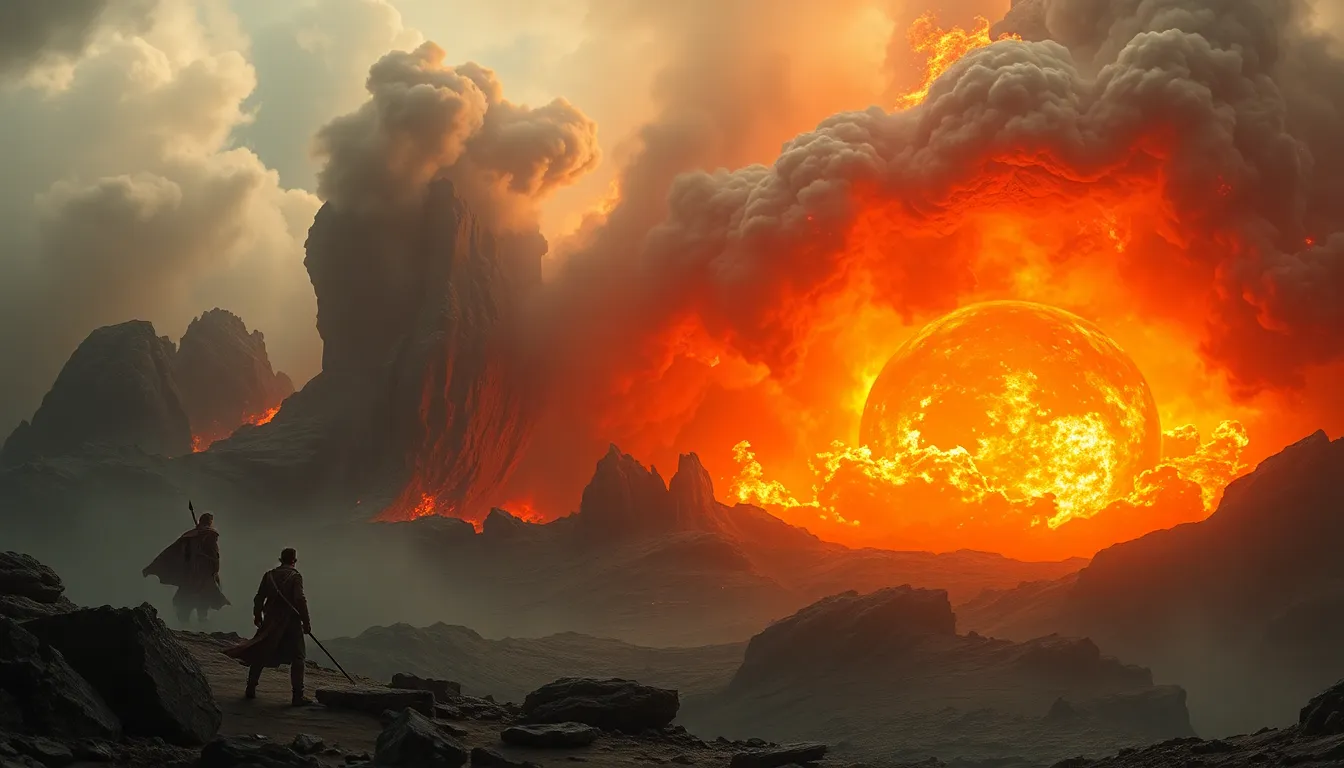The Wolf’s Shadow: Exploring the Dark Side of Norse Mythology through Fenrir
I. Introduction
Norse mythology is a rich tapestry of gods, giants, and heroes, woven together with themes of fate, chaos, and the eternal struggle between order and destruction. It has captivated the imagination of countless generations and continues to influence modern culture. Among its most intriguing figures is Fenrir, the monstrous wolf whose story embodies the darker aspects of this mythology.
This article aims to explore the multifaceted character of Fenrir, shedding light on his origins, symbolism, and significant role in Norse mythology, particularly in relation to the concepts of chaos and fate.
II. The Origins of Fenrir
Fenrir’s story begins with his unusual parentage. He is the offspring of Loki, the trickster god, and Angerboda, a giantess. This lineage marks him as a figure of chaos from the start, as Loki is often associated with mischief and unpredictability.
According to prophecy, Fenrir was destined to play a crucial role in the events of Ragnarok, the cataclysmic battle that leads to the end of the world and the death of many gods. Initially viewed with caution, Fenrir’s character evolves as he grows, becoming a symbol of the fear that the gods have of his potential.
III. The Symbolism of Fenrir
Fenrir represents chaos and destruction, embodying the primal forces of nature that challenge the established order. His very existence serves as a reminder of the inevitability of fate and the cyclical nature of life and death.
The wolf, as a symbol, appears in various cultures, often representing strength, loyalty, and ferocity. However, in the case of Fenrir, he is primarily seen as a harbinger of doom. His significance lies not only in his destructive potential but also in the way he encapsulates the human struggle with uncontrollable forces.
IV. Fenrir’s Role in Norse Mythology
Fenrir features prominently in several key myths, particularly regarding his binding by the gods and his role in the prophecy of Ragnarok. The gods, aware of Fenrir’s potential for destruction, attempt to contain him. This leads to a complex relationship characterized by fear, respect, and a recognition of fate’s inevitability.
His impact on the cosmos is profound; Fenrir is not just a monster but a critical player in the unfolding of destiny, representing the chaos that will ultimately lead to the downfall of the gods.
V. The Binding of Fenrir
The story of Fenrir’s binding is a poignant tale of trust, betrayal, and manipulation. The gods, fearing Fenrir’s strength, decide to bind him with a magical rope, Gleipnir, forged from impossible elements. However, Fenrir is wary of their intentions and only agrees to be bound under the condition that one of the gods places their hand in his mouth as a pledge of good faith.
This act of trust leads to betrayal when Fenrir realizes he has been deceived and is unable to escape. The binding symbolizes the moral complexities of manipulation and the consequences of fear-driven actions. It serves as a cautionary tale about the lengths to which beings will go to maintain control over chaos.
VI. Fenrir and Ragnarok
Fenrir’s role in Ragnarok is perhaps his most significant contribution to Norse mythology. He is prophesied to break free from his bindings during the apocalyptic events, symbolizing the release of chaos into the world. His most notorious act is the devouring of Odin, the Allfather, marking a pivotal moment in the battle between the gods and the forces of chaos.
The cyclical nature of destruction and rebirth is embodied in Fenrir’s actions. While his emergence signifies doom for the gods, it also paves the way for renewal and the eventual emergence of a new world. Fenrir thus represents not just chaos, but the necessary destruction that leads to new beginnings.
VII. Cultural Interpretations and Legacy
Fenrir’s influence extends beyond ancient texts; he has permeated modern literature and media. From fantasy novels to films, his character has inspired countless interpretations, often embodying the struggle against oppression and the fight for freedom.
When compared to other mythological figures, Fenrir stands out as a complex symbol of rebellion and the darker aspects of the human psyche. He challenges the moral order, representing the chaos that exists within humanity itself.
- In literature, Fenrir’s story often parallels themes of betrayal and the consequences of fear.
- In film, he is depicted as a formidable antagonist, embodying the struggle between good and evil.
- In art, Fenrir is portrayed as a tragic figure, evoking sympathy despite his destructive nature.
VIII. Conclusion
In summary, Fenrir occupies a vital place in Norse mythology, representing the themes of chaos, destruction, and the inevitability of fate. His story is a reflection on the darker aspects of existence, resonating with the human experience of confronting uncontrollable forces.
As we reflect on the themes of darkness and chaos in mythology, Fenrir’s narrative serves as a powerful reminder of the duality of life—where destruction can lead to renewal. In contemporary culture, Fenrir’s legacy continues to inspire, serving as a symbol of rebellion and the complexities of the human condition.



